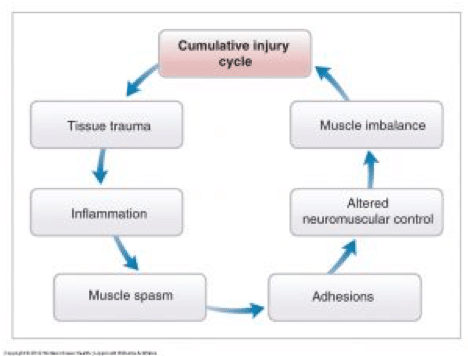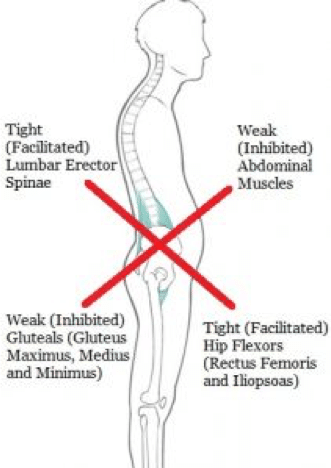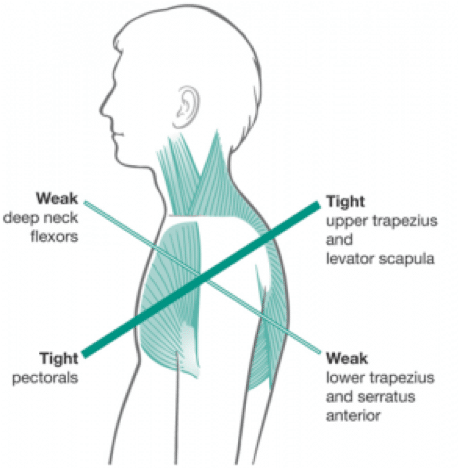
Strengthening the Kinetic Chain for Injury Prevention

It’s time to strengthen your kinetic chain!
It may come as a surprise to some when your physiotherapist prescribes exercises for a different muscle than the one you are rehabilitating. The question is – why?
The kinetic chain describes a way in which your body’s joints, muscles and nerves influence one another throughout motion. Less stress is placed on joints and the body moves more freely when this network of movement is performing efficiently.
A dysfunctional kinetic chain places an increased joint and bone loading force on the body. This means you are more susceptible to a movement fault and an increased risk of injury. The body’s muscular, articular or neural impairments cause this imbalanced movement pattern. This is a Serial Distortion Pattern.
Serial Distortion Pattern
A serial distortion pattern suggests to a condition in which an individual’s kinetic chain is compromised due to a deficiency in one of its components. When an individual lacks mobility, strength, endurance, flexibility or power within the muscular system, Serial Distortion occurs. This leads to compensation patterns. Thus, the increased stresses placed on compensated joints formulates a cumulative injury cycle.

The two most common serial distortion patterns are:
- Lower Cross Syndrome
- Upper Cross Syndrome
Lower and Upper Cross Syndromes occur through reciprocal inhibition. Reciprocal inhibition is where muscles are activated or shortened for an extended length of time, creating a reduced functioning of the muscles antagonist (the muscle that is relaxed while another muscle contracts to produce a movement).
Consequently, the antagonist muscle becomes inhibited formulating poor movement patterns through muscular imbalances and synergistic dominance.
Lower Cross Syndrome

Lower Cross Syndrome occurs when an individual has an anterior pelvic tilt corresponding with increased lumbar extension.
Gastrocnemius, soleus, iliopsoas, adductors, quadriceps, hamstrings, erector spinae, tensor fascia lata and quadratus lumborum are commonly tight muscles.
Rectus abdominus, multifidus, gluteus maximum, gluteus minimus, gluteus medius, latimus dorsi, transverse abdominus and internal obliques are commonly weak muscles.
These corresponding tight and weak muscle imbalances create a dysfunctional kinetic chain through insufficient motion patterns. Common dysfunctions include poor lumbar spine stabilisation, over-active hamstrings, decreased neural drive within the gluteal muscles, altered hip extension and articular stress in the sacroiliac joint and facets of lumbar spine (Clark, 2001).
Upper Cross Syndrome

Upper Cross Syndrome occurs when an individual has anteriorly rounded shoulders with a forward head posture.
Muscles that are commonly tight are pectoralis major, pectoralis minor, levator scapula, upper trapezius, sternocleidomastoid, scalenes and sub occipitals.
The mid trapezius, serratus anterior, teres minor and infraspinatus are commonly weak muscles.
Rotator cuff impingement, gleno-humeral instability and thoracic outlet syndrome are commonly incorrect movement patterns. These commonly incorrect movement patterns are associated with muscle imbalances (Cochrane, 2019).
Pivotal Motion Physiotherapy can assist in assessing your kinetic chain and dysfunctional movement patterns. We can help you prevent an injury or reduce the risk of an injury throughout rehabilitation to enable your body to move safely and freely throughout motion through appropriate treatment and exercise prescription. Call us today on (07) 3352 5116 or book online!
References
Cochrane, S. (2019). Kinetic Chain Dysfunctions in Sport – Sean Cochran Sports Performance Training. [online] Sean Cochran Sports Performance Training. Available at: https://seancochran.com/kinetic-chain-dysfunctions-sport/
Clark, M. (2001) Integrated Training, Human Movement Science, Current Concepts in Flexibility Training, Core Stabilization Training, Neuromuscular Stabilization Training. In Integrated Training for the New Millennium, edited by J. Jackson. Thousand Oaks, CA: National Academy of Sports Medicine



